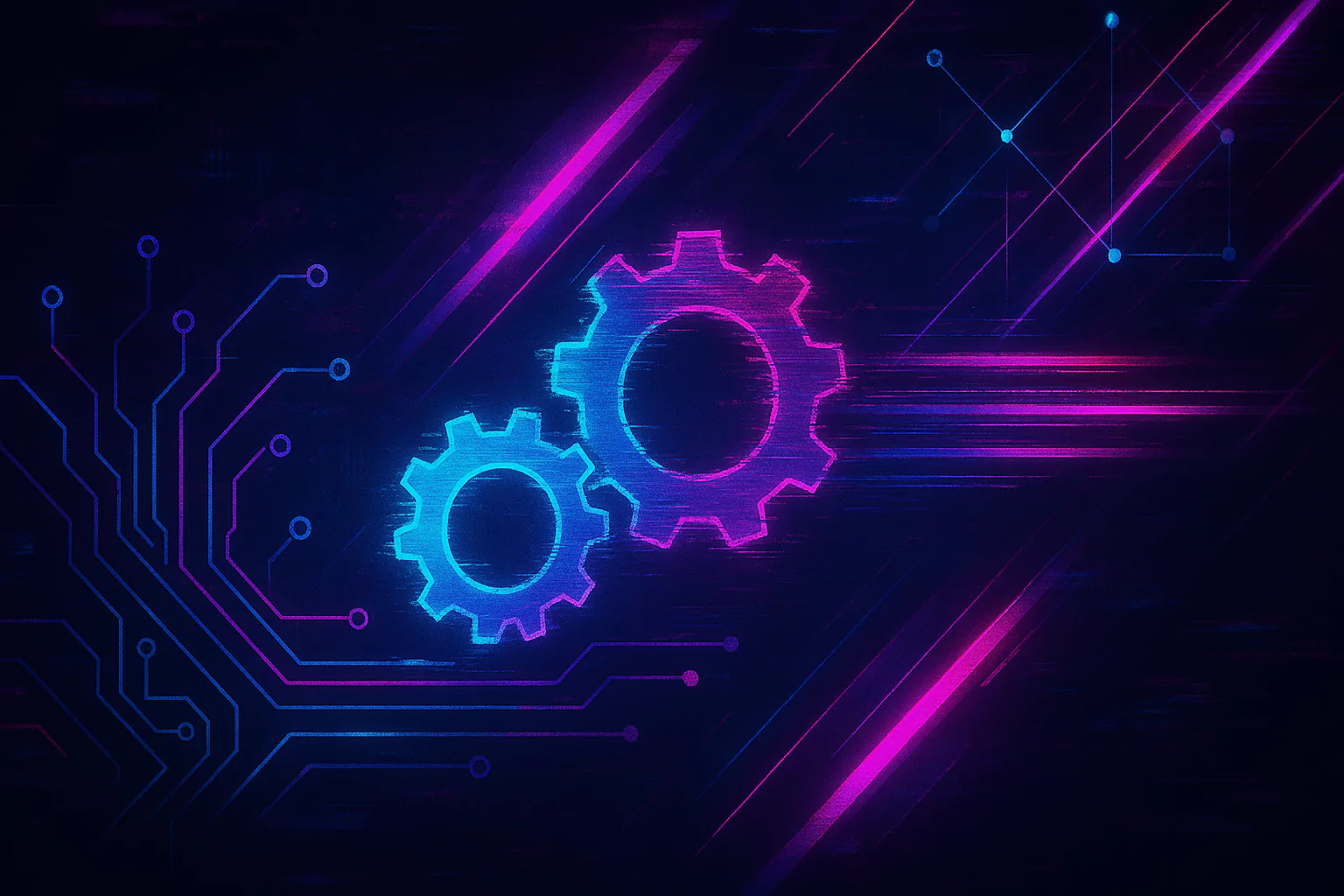AI-Driven Design vs. Traditional Outsourcing: Finding the Best Graphic Design Solution for Your Business
AI-Driven Design vs. Traditional Outsourcing: Finding the Best Graphic Design Solution for Your Business
The dynamic nature of the business landscape demands that companies prioritize having a high-quality graphic design to stand out from the competition, capture audience attention and effectively communicate their brand’s message. However, with the rise of AI-driven design tools and the continued popularity of traditional outsourcing, it can be challenging to determine the best approach for your business.
This article will explore AI-driven design and traditional outsourcing solutions to help you make an informed decision on the most effective solution for your unique needs and budget.
Definition and Significance of AI in the Design Industry
Artificial Intelligence refers to machines’ ability to replicate human intelligence and perform tasks that typically require human cognition, such as learning, reasoning, problem-solving, and adapting to new information.
In the design industry, AI algorithms enable designers to analyze large datasets swiftly, generate multiple design iterations, and anticipate user preferences. This enhances efficiency and accelerates the design process, allowing designers to accomplish more in less time.
AI also leverages user data to create highly personalized designs tailored to individual preferences, a task that is difficult to achieve manually. By deriving insights from data, AI helps designers make informed decisions based on trends and patterns rather than intuition alone.
In terms of creativity, AI facilitates the generation of diverse design variations that human designers might overlook. This expands creative possibilities and encourages innovative approaches to design challenges.
Additionally, AI automates repetitive tasks such as color correction, image resizing, and basic layout generation. This automation frees up designers to focus on more complex and strategic aspects of their work, increasing overall productivity.
Furthermore, AI models can predict user responses to different design elements, enabling designers to optimize their work for the best possible outcomes before implementation. This predictive capability minimizes the need for trial and error, leading to more effective and impactful design solutions.
Role of AI in transforming design processes and outcomes
AI is revolutionizing the design process across several critical areas. During ideation, AI can help find ideal solutions that balance aesthetics, functionality, and usability. For example, tools such as Uizard automatically generate high-quality UI prototypes based on user input, speeding up development. In addition, AI helps in visual design by suggesting colors, fonts, and compositions, enhancing the overall creative process.
Furthermore, AI transforms user research by analyzing behavior patterns to improve the overall user experience. Platforms like Mixpanel leverage AI to derive actionable insights from data, guiding designers towards more informed decisions.
Integrating AI into design collaboration and project management streamlines workflows.
Understanding AI in Design
By generating innovative solutions and improving user experiences, AI is changing how designers approach their work. Below, we discuss the core concepts of AI in design and the key technologies in AI-driven design.
What is AI in design?
Artificial intelligence in graphic design involves the application of machine learning to create and enhance graphics. These AI tools offer shortcuts in design processes by assisting designers or, in some cases, automating tasks traditionally performed by designers themselves. This integration of AI aims to streamline workflows, increase efficiency, and potentially transform how design work is conceptualized and executed in various industries.
Key technologies in AI-driven design
AI-driven design harnesses several cutting-edge technologies to transform traditional design practices. Understanding these foundational technologies is crucial for grasping how AI is reshaping the design landscape and empowering designers to achieve new levels of efficiency and innovation.
Machine Learning
Machine learning algorithms can analyze large datasets to identify patterns and insights that inform the design process. This can include user behavior data, market trends, and design precedents. Machine learning can help designers make more data-driven decisions.
Neural Networks
Neural networks are a type of machine-learning model inspired by the structure of the human brain. They can be trained on design-related data to generate new design concepts, optimize existing designs, and even create unique visual elements.
Generative Design
Generative design algorithms create iterative design solutions based on specified parameters and constraints. The AI system can rapidly produce numerous design variations, which the human designer can then evaluate and refine. This allows designers to explore a much wider range of possibilities compared to manual design.
The Problem – Traditional Design Challenges
Traditional design methods have historically been fundamental to creative endeavors across various industries. However, these methods are not without their inherent limitations and challenges, which we shall discuss below.
Limitations of Manual Design Processes
Manual design processes involve extensive reliance on physical tools and handcrafted techniques, which come with some limitations, including the following:
- Time-consuming and inefficient: Manual drafting and design processes are inherently slow and labor-intensive, requiring significant human effort to create and modify designs.
- Increased risk of errors: Manual drafting is prone to human errors, such as mistakes in measurements, calculations, and drawing details.
- Lack of flexibility: Making changes to manual designs is difficult and time-consuming, as each drawing must be recreated separately.
- Limited collaboration and communication: Sharing and coordinating manual designs among team members and stakeholders is challenging, hindering collaboration.
- Difficulty in data management: Storing, organizing, and retrieving manual design documents can be cumbersome, leading to the potential loss of information.
Common Challenges Faced by Designers and Businesses
In addition to the limitations of manual processes, designers and businesses face several common challenges that impede productivity and innovation, including the following:
- Increasing design complexity: As projects become more sophisticated, the design process becomes more complex, requiring advanced tools and techniques to manage the increased level of detail.
- Pressure for faster turnaround times: Businesses often face tight deadlines and the need to deliver designs and products quickly, which can be challenging with manual processes.
- Maintaining design quality and accuracy: Ensuring consistent quality and accuracy in manual designs can be challenging, especially as the scale and complexity of projects grow.
- Version Control: Managing different versions of designs and ensuring everyone works on the latest iteration can lead to confusion and errors.
The Solution: Leveraging AI for Design
Artificial Intelligence offers a transformative solution that redefines how design work is approached and executed. By integrating AI into design workflows, businesses and designers can achieve greater efficiency, scalability, and innovation.
How AI addresses traditional design challenges
AI’s ability to automate tasks, analyze vast amounts of data, and generate insights is crucial for overcoming the inefficiencies and constraints of manual design processes. The following are the specific ways AI addresses these challenges:
- Efficiency and Speed: AI tools can quickly generate design concepts and layouts, which cuts down on the time needed for initial planning. This makes the overall design process smoother and allows projects to be completed more swiftly.
- Data-Driven Customization: By using data analytics, AI can provide personalized design solutions that cater to individual preferences and needs. This level of customization ensures that designs align with the user’s unique style and requirements.
Comparison Overview
Businesses have two primary options to consider when it comes to graphic design: AI-driven design and traditional outsourced graphic design. While these approaches may seem similar on the surface, they cater to vastly different scopes and requirements.
AI-Driven Design vs. Traditional Outsourced Graphic Design
While AI-driven design tools offer new possibilities for enhancing collaboration between designers and machines, traditional outsourced graphic design relies solely on the expertise and creativity of human designers.
AI-driven design is well-suited for businesses that prioritize speed, efficiency, and cost-effectiveness in their graphic design needs. AI-powered design tools can automate repetitive tasks, generate innovative design options, and personalize designs to specific user preferences, freeing up designers to focus on more creative aspects of the design process.
However, human designers bring unique problem-solving skills, emotional intelligence, and a deep understanding of design principles to create original and effective solutions. Working with a human designer allows for open communication, personalized attention, and the ability to provide real-time feedback and revisions, resulting in a more personalized design experience.
AI-Driven Design
AI-driven design refers to the application of artificial intelligence technologies, such as machine learning and data analytics, to automate and enhance various aspects of the design process. This includes tasks like generating design variations, optimizing layouts, and personalizing user experiences based on data analysis.
Benefits
AI-driven design offers several advantages that revolutionize the creative and operational aspects of design, including the following:
- Enhanced creativity and innovation: AI can analyze vast amounts of data, identify patterns, and generate novel design concepts that may not have been considered by humans. This can lead to more innovative and user-centric designs.
- Faster design iterations: AI tools can automate repetitive tasks, such as generating layout options, creating design mockups, and writing front-end code. This streamlines the design process, allowing designers to focus on refining the user experience.
- Data-driven decision-making: AI can leverage user data to inform design decisions, ensuring that designs are tailored to specific user segments and backed by data. This approach leads to more user-centric and effective designs.
Challenges
While AI-driven design presents transformative benefits, it also poses challenges that need careful consideration. Some of the challenges include the following:
- High initial investment: Implementing AI-driven design requires significant investment in technology, infrastructure, and training. The initial costs can be a barrier for some organizations.
- Need for technical expertise: Effectively leveraging AI in design requires a combination of design and technical skills. Organizations may need to invest in upskilling their teams or hiring specialized talent.
- Potential reduced human touch: While AI can enhance the design process, it is essential to maintain a balance between AI-driven insights and human creativity and intuition. Over-reliance on AI may lead to designs that lack the personal touch and emotional connection that humans can provide.
Traditional Outsourced Graphic Design
Outsourcing graphic design is the practice of hiring external design agencies, freelancers, or studios to handle design-related tasks and projects that would otherwise be performed in-house. This approach allows businesses to access a pool of professional designers with diverse skills, expertise, and industry knowledge without the overhead costs of maintaining an in-house design team.
Benefits
Outsourcing graphic design offers several advantages that businesses can leverage, including the following:
- Access to professional expertise: By outsourcing graphic design, businesses can tap into the skills and experience of seasoned designers who specialize in various areas such as branding, web design, marketing collateral, and more. This access to professional expertise can help elevate the quality and effectiveness of a company’s visual assets.
- Flexibility to scale design efforts: Outsourcing provides the flexibility to scale design work up or down based on changing business needs and market demands. This is particularly beneficial for companies that experience fluctuations in their design workload, as it allows them to adjust resources without the constraints of a fixed in-house team.
- Established processes and quality control: Reputable design agencies and freelancers often have well-defined processes and quality control measures in place to ensure consistent, high-quality deliverables. This can be advantageous for businesses that lack the internal resources or expertise to manage complex design projects effectively.
Challenges
While traditional outsourced graphic design offers valuable benefits, it also presents challenges that businesses should be aware of. Some of the challenges include the following:
- Higher long-term costs: While outsourcing can be cost-effective in the short term, the long-term costs of working with external design providers may be higher than maintaining an in-house team, especially for businesses with ongoing design needs.
- Communication barriers: Coordinating with an external design team can sometimes lead to communication challenges, particularly when it comes to understanding the client’s brand, vision, and specific requirements. This can result in delays, revisions, and suboptimal design outcomes.
- Dependence on external vendors: Relying on external design providers means that businesses may become dependent on these vendors, which can create challenges if the relationship sours or the vendor’s performance declines over time. This can disrupt workflow and impact the continuity of design projects.
Key Considerations in Choosing Design Solutions
There are several important factors you need to consider when selecting design solutions, to ensure the best outcome for your project. The following are the main points to consider.
Budget Constraints
AI-driven design solutions can be more cost-effective compared to traditional outsourced design, especially for simple tasks like generating basic logos or web designs. However, for more complex projects requiring human expertise, such as packaging design or comprehensive brand identity development, outsourcing to designers may still be necessary.
Project Scope and Complexity
For straightforward projects with clear guidelines, AI-driven design can offer quick and efficient results. For more complex projects requiring bespoke design elements and creative input, traditional outsourced designers are better suited to handle the intricacies involved. Carefully assess the scale and requirements of your project to find the right fit.
Required Expertise and Skill Set
While AI is making strides in graphic design, it still struggles with tasks that require deep expertise, such as motion design, environmental design, and developing comprehensive visual identities. For projects demanding specialized skills, working with human designers who have mastered their craft is still the best approach. AI can assist designers, but cannot replace their expertise.
Turnaround Time and Deadlines
AI-driven design tools can produce results rapidly, making them ideal for projects with tight deadlines. On the other hand, traditional outsourced design may take longer due to the iterative process of consultation and revision, but it often results in higher quality, more refined outcomes.
Long-term vs. Short-term Needs
Finally, assess whether your design needs are long-term or short-term. AI-driven design tools can offer scalability and cost-efficiency for ongoing projects requiring frequent updates and revisions. Traditional outsourced design might be the better option for one-time projects or those that demand a high degree of customization and personal touch.
Case Studies
Let us explore real-world examples to understand the practical applications and outcomes of AI-driven design versus traditional outsourcing. These case studies highlight the strengths and limitations of each approach and offer valuable insights into the lessons learned.
Case Study 1. Traditional Outsourced Graphic Design Solution: Airbnb Partnered with a Design Agency for Digital Rebranding
When Airbnb approached DesignStudio, the brand had outgrown its original identity and needed a new brand strategy that could express the vision of its founders and guide the business. Airbnb’s rapid growth meant the company needed to redefine its global hospitality brand and create a new identity that could support its exponential expansion.
Solution
DesignStudio’s immersion into Airbnb revealed that the company was about people and belonging, not just about the places to stay. From this insight, DesignStudio defined Airbnb’s brand mission as “Belong Anywhere”, which gave the brand a clear purpose and reason for everything it did.
Based on this brand strategy, DesignStudio created a full brand identity for Airbnb, including the “Belo” logo as a symbol representing belonging. The brand expression shifted the focus from location and price to the warmth and welcome of no longer feeling like a tourist. DesignStudio also redesigned Airbnb’s technology and digital experiences to enable seamless global storytelling.
Outcome
The Airbnb rebrand was a major success, trending on Twitter and helping propel the company’s valuation to $29 billion above its closest competitor in less than four years. On its first day of trading, Airbnb’s share price more than doubled the IPO price, giving it a market cap of about $86.5 billion. The “Belong Anywhere” brand mission has become embedded in every part of Airbnb’s business, unifying and differentiating the company.
Case Study 2. AI-Driven Design Solutions: Canva’s AI Design Tools
A small fashion retail store needed to create professional and appealing marketing materials to attract customers and boost online sales. However, the retail store had a limited budget and no in-house graphic design expertise. They needed a cost-effective solution that could help them design promotional materials quickly and maintain brand consistency.
Solution
The retail store started using Canva’s AI-powered design platform to create various marketing materials, including social media posts, email newsletters, flyers, and website banners. Canva provided an extensive library of templates, images, and design elements that the boutique could customize to fit its brand aesthetic. The AI-driven features of Canva helped automate design suggestions, streamline the creation process, and ensure a professional look across all materials.
Outcome
The retail store significantly reduced its marketing expenses by eliminating the need for external graphic designers. It was also able to produce high-quality marketing materials in a fraction of the time it would have taken with traditional design methods. This allowed them to respond quickly to market trends and promotional opportunities.
With consistent and visually appealing marketing materials, the retail store saw a noticeable increase in customer engagement on social media platforms and a boost in online sales.
In this section, provide case studies of AI-Driven Design vs. Traditional Outsourcing, focusing on the following points:
Analysis of outcomes and lessons learned
Both case studies highlight the distinct advantages and considerations of traditional outsourced graphic design and AI-driven design solutions. Traditional outsourcing excels in strategic branding and deep emotional engagement, as seen with Airbnb’s rebranding success. Meanwhile, AI-driven tools like Canva offer speed, affordability, and scalability, making them ideal for small businesses looking to optimize their marketing efforts. Businesses should evaluate their specific needs, budget constraints, and long-term strategic goals when choosing between these two design approaches to achieve optimal outcomes.
Tools and Technologies for AI in Design
AI-driven design tools and technologies are not only streamlining workflows but also enhancing the creative potential and efficiency of design teams across industries. The following are some popular tools and software used in AI-driven design:
Overview of popular AI design tools and software
Below is an overview of popular AI design tools and software designers used to augment their capabilities and achieve superior outcomes.
- Adobe Firefly: An AI-powered tool integrated with Adobe’s Creative Cloud that can generate images, edit photos, and create designs based on text prompts.
- MidJourney: A powerful AI image generation tool that can create highly realistic images from text descriptions.
- Topaz Labs: An AI-powered suite of image enhancement tools that can improve photo quality, remove noise, and perform other edits.
- Khroma: An AI-powered tool that generates custom color palettes based on user preferences.
- Uizard: An AI-powered prototyping tool that can turn hand-drawn sketches into digital designs for apps and websites.
- Canva: An AI-powered design platform that provides templates, graphics, and design suggestions to create visual content.
- IBM Watson Design AI: IBM Watson offers AI tools for design analysis and trend prediction. It analyzes vast amounts of data to identify emerging design trends, color palettes, and user preferences, helping designers stay ahead of trends and create more relevant designs.
Comparison of tools used in AI-driven and traditional design processes
Tools used in the AI design process leverage machine learning algorithms to automate repetitive tasks, generate design ideas, and provide data-driven recommendations. These tools enable designers to be more efficient and explore a wider range of creative possibilities.
In contrast, tools used in the traditional design process require more manual effort and expertise from designers. They excel at enabling fine-tuned control, complex customization, and human creativity in the design process.
Future Trends in AI and Design
AI and machine learning are set to significantly influence the future of design, transforming creative processes and empowering designers globally. As AI technologies continue to advance, their impact goes beyond automating tasks to fundamentally shaping design innovation and enhancing user experiences.
The Impact of AI and Machine Learning on the Future of Design
AI’s integration into design processes is expected to streamline workflows, enhance creativity, and optimize user experiences. Machine learning algorithms will increasingly assist designers in analyzing data, predicting trends, and generating personalized designs on a large scale. This transformative shift promises to accelerate innovation and redefine the boundaries of what’s possible in design.
Rise of Collaborative Design Platforms
AI-powered collaborative design platforms are on the rise, fostering teamwork among dispersed teams and enabling smooth integration of varied viewpoints in design projects. These platforms facilitate real-time collaboration, version control, and iterative enhancements, empowering designers to work more efficiently and cohesively than ever before.
Predictions for the Future of AI in Design
Looking forward, AI’s role in design is poised to evolve further, driven by advancements in natural language processing, computer vision, and generative design capabilities. Design tools will become more intuitive, capable of interpreting and responding to human intent and creative subtleties. Additionally, AI-driven insights will increasingly guide strategic design decisions, ensuring designs are not only visually compelling but also strategically aligned with business goals.
FAQs
What is AI in design?
AI in design refers to the application of artificial intelligence technologies, such as machine learning and neural networks, to automate and enhance various aspects of the design process. AI tools can generate designs, analyze data to optimize user experiences, predict trends, and streamline workflows in graphic design, user interface design, and other creative disciplines.
How do AI-driven design solutions compare to traditional outsourced graphic design?
AI-driven design solutions offer efficiency, speed, and cost-effectiveness by automating repetitive tasks, generating design variations, and providing data-driven insights. They are particularly suitable for projects requiring rapid turnaround times and consistent design quality. In contrast, traditional outsourced graphic design offers personalized creativity, deeper brand understanding, and collaborative input, but may involve higher costs and longer turnaround times.
What are the benefits of using AI for design?
The benefits of AI for design include the following:
- Enhanced creativity and innovation through automated design generation and idea exploration.
- Faster design iterations and project completion due to automation of repetitive tasks.
- Data-driven decision-making based on insights derived from large datasets.
- Improved efficiency in workflow management and resource allocation.
- Predictive capabilities for anticipating design trends and user preferences.
What tools are essential for AI-driven design?
Essential tools for AI-driven design include the following:
- Adobe Creative Cloud with AI integrations: Tools like Adobe Firefly for image generation and editing.
- Canva: AI-powered platform for creating visual content with templates and design suggestions.
- Uizard: AI-powered prototyping tool that converts sketches into digital designs.
- IBM Watson Design AI: Tools for trend prediction, design analysis, and data-driven insights.
- Natural language processing and computer vision tools for understanding and responding to user inputs.
How can AI impact the future of design services?
AI is expected to revolutionize design services by:
- Enhancing automation and efficiency across design workflows.
- Enabling more personalized and adaptive user experiences.
- Facilitating global collaboration and real-time design iterations.
- Advancing predictive design capabilities for anticipating and responding to market trends.
- Redefining the role of designers towards more strategic and creative leadership.
Conclusion
Choosing between AI-driven design and traditional outsourcing for graphic design is crucial for businesses aiming to optimize their design processes and outcomes. Both approaches offer distinct advantages and cater to different business needs and objectives.
AI-driven design solutions excel in automating tasks, speeding up workflows, and providing cost-effective options for repetitive design needs. They are ideal for businesses looking to enhance efficiency, leverage data-driven insights, and scale design efforts quickly.
On the other hand, traditional outsourcing of graphic design brings a human touch, personalized expertise, and deep understanding of brand identity and market nuances. It is beneficial for projects requiring creativity, customization, and strategic alignment with specific business goals.
To make an informed decision for your business, evaluate your unique needs, project scope, budget constraints, and long-term objectives. By doing so, you can choose the design solution – whether AI-driven or traditional outsourcing – that best aligns with your goals, enhances your and identity, and drives success in the competitive marketplace.








